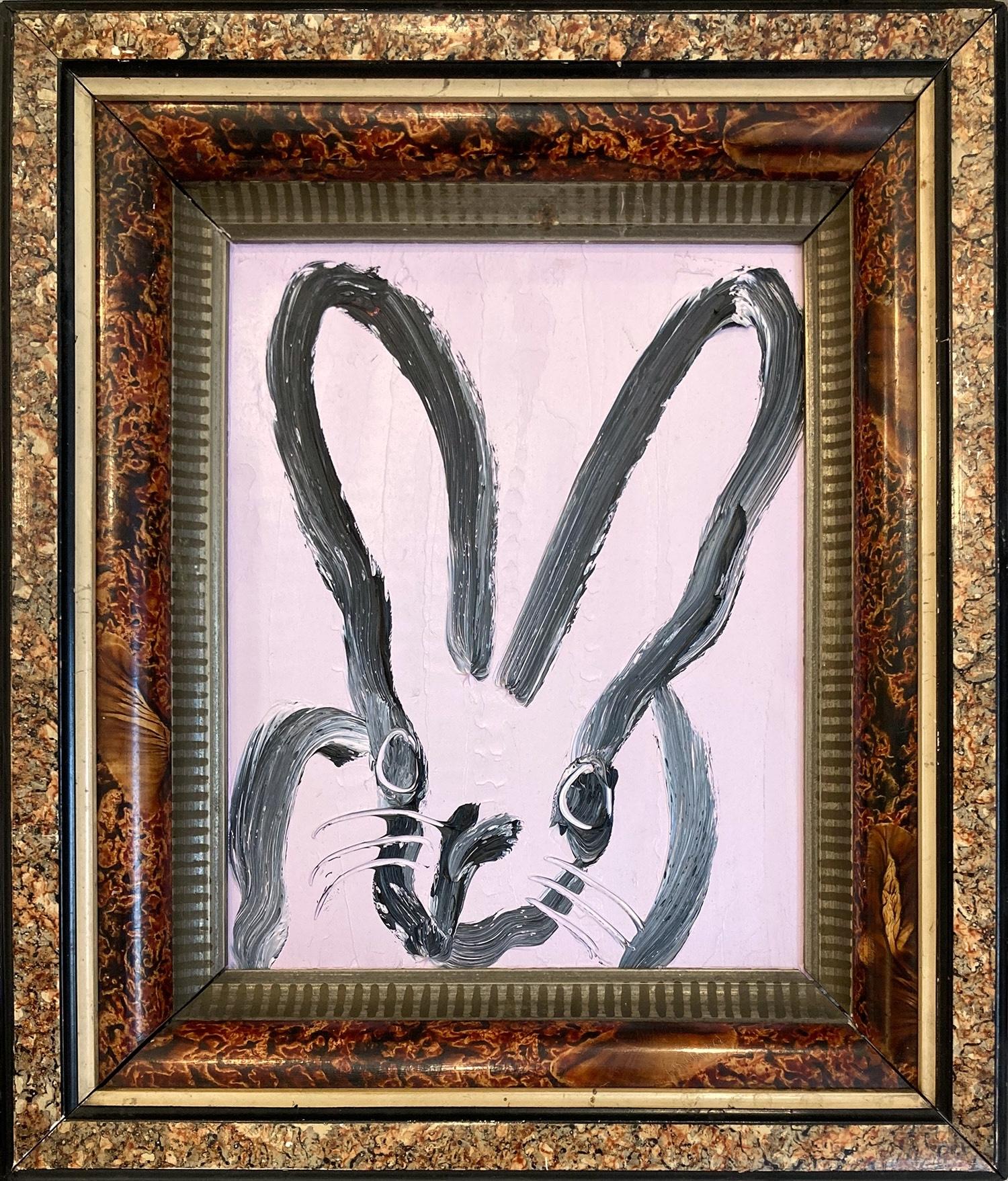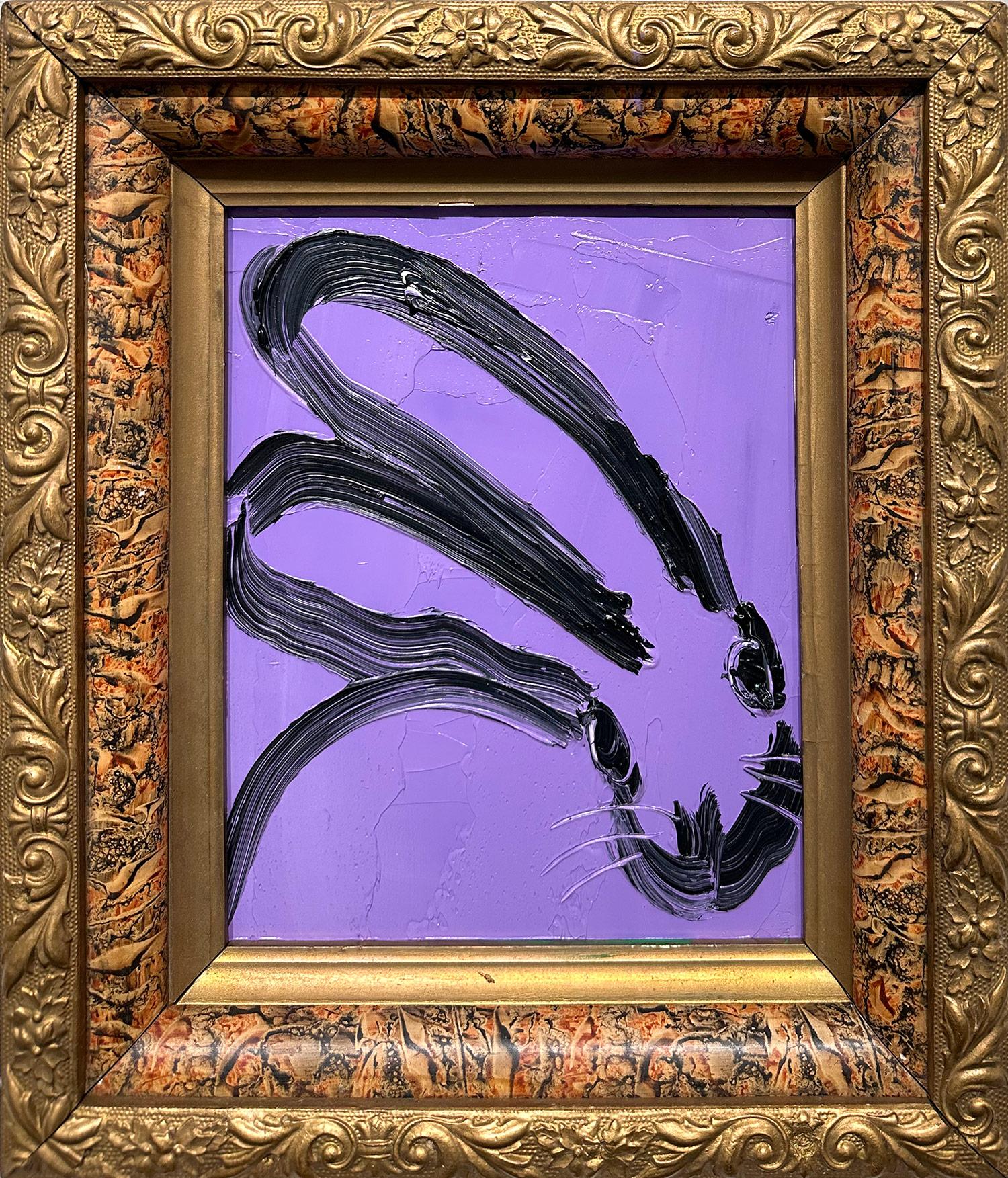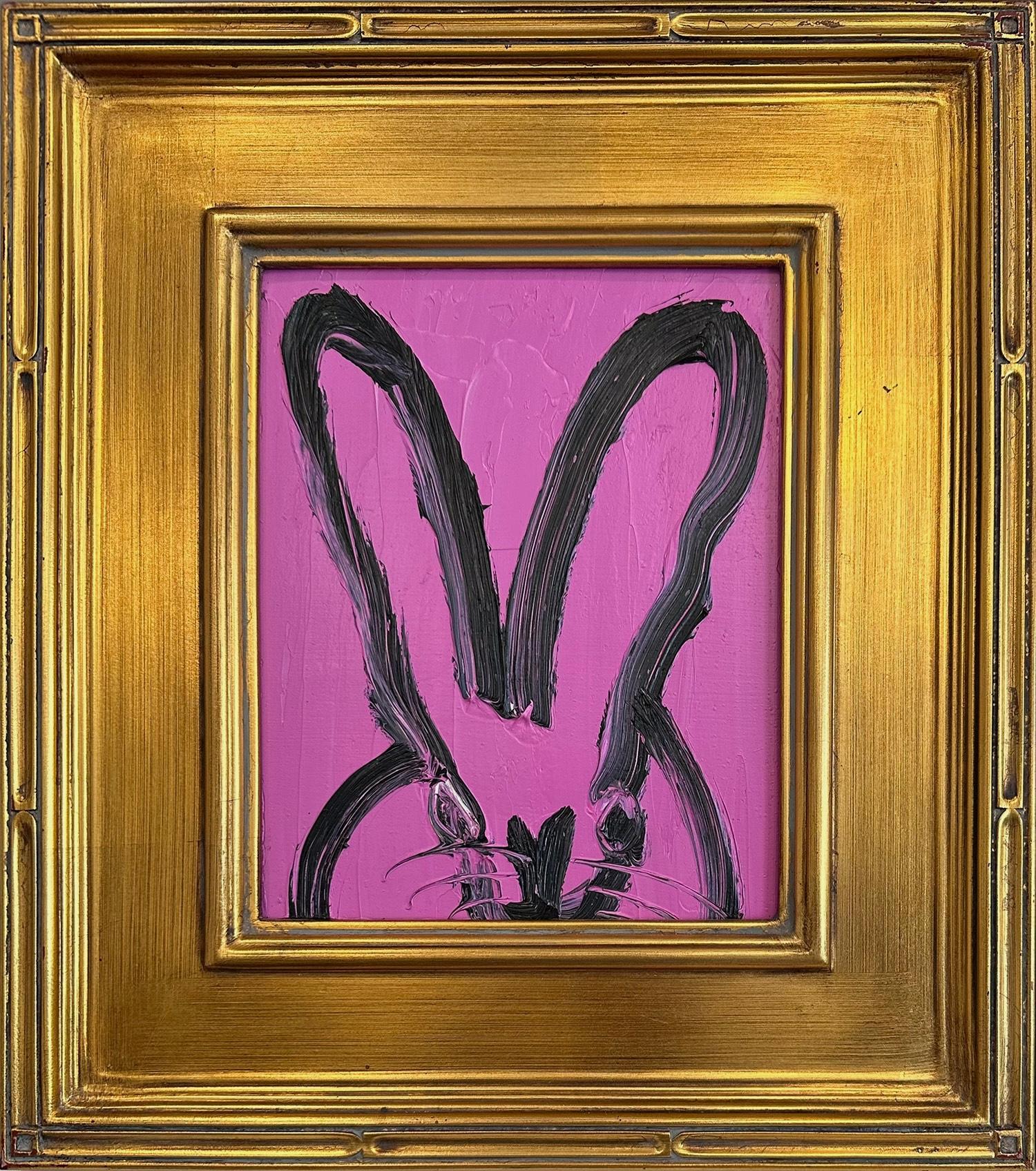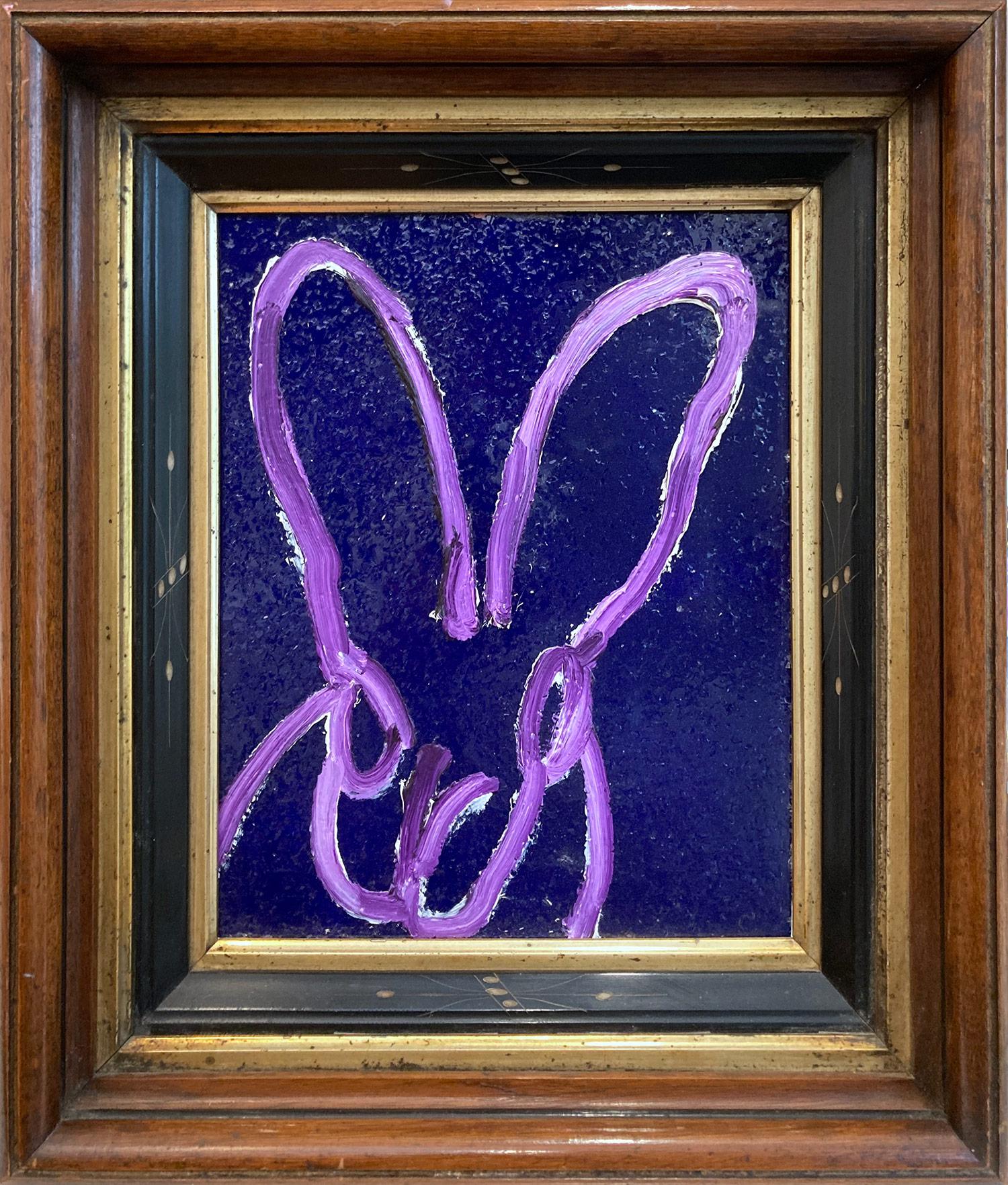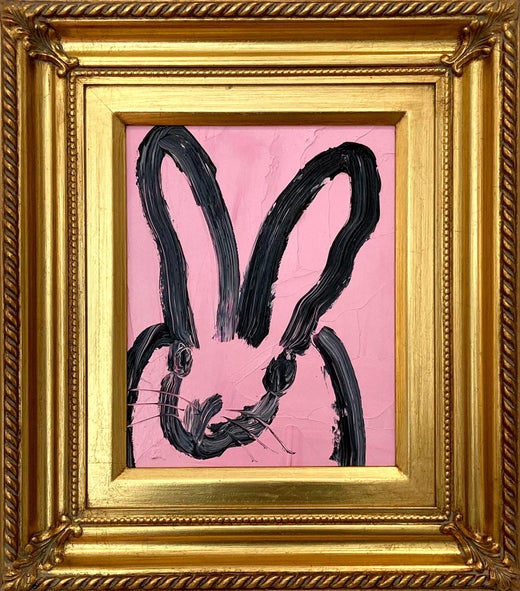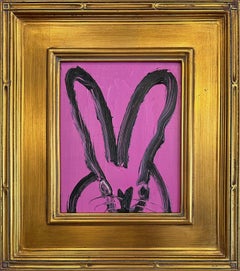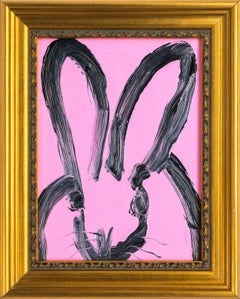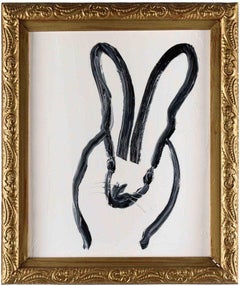Hunt Slonem"Benson" Black Bunny on Light Lavender Background Oil Painting on Wood Panel2023
2023
About the Item
- Creator:Hunt Slonem (1951, American)
- Creation Year:2023
- Dimensions:Height: 16 in (40.64 cm)Width: 14 in (35.56 cm)Depth: 1.5 in (3.81 cm)
- Medium:
- Movement & Style:
- Period:
- Condition:As the painting comes displayed in a wood frame that the artist sources and selects for the artwork, the frame may show some ordinary wear and scuffs from age, chips or minor imperfections in line with the manufacturing period.
- Gallery Location:New York, NY
- Reference Number:Seller: 0055471stDibs: LU98214176532
Hunt Slonem
Hunt Slonem has mastered the art of repetition in his exuberant Neo-Expressionist paintings. Some of his favorite subjects are bunnies, butterflies and the tropical birds that live in the private aviary nestled within his 30,000-square-foot studio complex in Brooklyn, New York.
“I believe in repetition like a holy mantra or rosary,” Slonem told Introspective, referring to his artistic method. “I am slightly influenced by Pop art, like the repetition of soup cans, postage stamps and celebrities. It’s something I have been doing my whole life.”
Slonem’s depictions of birds — which are often rendered in thick, gestural brushstrokes and arranged in a loose grid — owe to a fascination with tropical avian life that he developed during a childhood spent in Hawaii and Nicaragua. Today, along with the aviary, his studio contains a personal garden, a collection of antiques and walls and walls of artworks.
“I am a collector of things. My primary focus is color and objects. I love to make them work in a space,” Slonem says. “Sometimes I define a space with color.”
Besides birds, Slonem has painted so many bunnies that they’ve become a signature. Limned in expressive, urgent strokes on flat, vibrantly colored backgrounds, these creatures fascinate through their subtle variations. “I have painted hundreds of rabbits, but each one is different,” the artist has explained. “Each has its own personality, and it just comes through me.”
The multitalented Slonem also sculpts, makes prints, creates installations and restores historic spaces. His work has achieved cult status among collectors and is represented in the permanent collections of such esteemed institutions as the Metropolitan Museum of Art. Slonem has even made an appearance on Real Housewives of New York.
Find original Hunt Slonem paintings, prints and other art for sale on 1stDibs.
- ShippingRetrieving quote...Shipping from: New York, NY
- Return Policy
More From This Seller
View All2010s Neo-Expressionist Animal Paintings
Oil, Wood Panel
2010s Neo-Expressionist Animal Paintings
Oil, Wood Panel
2010s Neo-Expressionist Animal Paintings
Oil, Wood Panel
2010s Neo-Expressionist Animal Paintings
Oil, Wood Panel
2010s Neo-Expressionist Animal Paintings
Glass, Resin, Oil, Wood Panel
2010s Neo-Expressionist Animal Paintings
Oil, Wood Panel
You May Also Like
21st Century and Contemporary Neo-Expressionist Animal Paintings
Oil, Panel
2010s Neo-Expressionist Abstract Paintings
Oil, Board
21st Century and Contemporary Neo-Expressionist Animal Paintings
Oil, Panel
2010s Contemporary Animal Paintings
Canvas, Oil, Acrylic
21st Century and Contemporary Contemporary Animal Paintings
Oil
2010s Neo-Expressionist Animal Paintings
Wood, Oil

